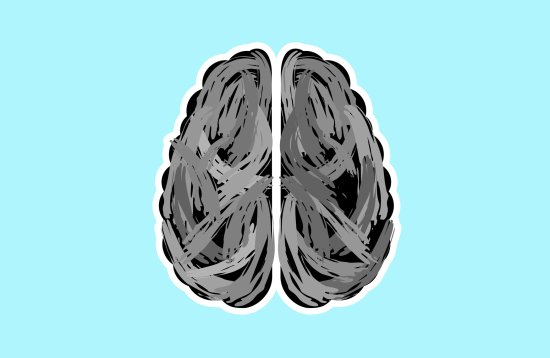
Creative work harmonizes our contradictions
Since the time of Plato, artists, philosophers and scientists have searched for the source of creative genius. Today, creativity is just as nebulous and perplexing a phenomenon to us as it was to the ancients. Inspiration seems to come and go at will, often arising when we least expect it and becoming blocked when we most need it, and creative thinking draws on many cognitive processes but goes beyond traditional measures of intelligence.
Should we just throw up our hands and declare creativity some sort of divine gift or strange superpower?
Not yet. We may never get the full picture, but scientists are beginning, step-by-step, to decode the workings of the creative mind and brain—and the reality is even more complex and fascinating than we ever realized.
[time-brightcove not-tgx=”true”]
Until very recently, creativity was described as the domain of the right hemisphere of the brain. According to the right/left brain myth, the “right brain” is creative, romantic, poetic and passionate, while the left brain is logical, analytical and technical. We describe artists as “right brain people” and accountants as “left brain people,” suggesting that some people are naturally creative and others are not, based on the way their brains work.
The true story of the creative mind is far more illuminating, and inclusive, than this limited picture. Rather than being the domain of one particular region or hemisphere, creativity is a whole-brain process.
The creative process consists of many interacting cognitive processes (both conscious and unconscious) and emotions, with different brain regions recruited to handle each task and to work together as a team to get the job done. One of the most exciting recent discoveries in cognitive neuroscience is that of the default network of the brain (or as we like to call it, the “imagination network”). The imagination network, which is responsible for self-generated thought, is involved in about half of our mental lives and forms the very core of human experience.
Engaging many regions on the medial (inside) surface of the brain in the frontal, parietal, and temporal lobes, processes associated with the imagination network have been found to be critical for the healthy development of compassion and empathy, the ability to daydream and understand ourselves, the ability to create meaning from our experiences and envision our future selves, and the ability to construct an ongoing sense of self. The activity of the imagination brain network also helps inform our most creative ideas.
But the imagination network doesn’t act alone to give rise to creative thought. It interacts with processes of the executive attention network, which support creative thinking by helping us to sustain focus on the task at hand, plan future actions, use various creative strategies, and evaluate ideas. The executive attention network also help us focus our imagination, blocking out external distractions and allowing us to tune into our inner experience.
Most people toggle between the imagination network and the executive attention network; when they are hyper focused on the world, their inner stream of consciousness is ignored, and when they tap into their inner self, their executive attention is suppressed.
Not so with creative people. The latest neuroscience of creativity suggests that creative people have greater connectivity between these brain networks that tend to work in opposition in most people. This messiness of creativity at the neurological level mirrors its real-life complexity. Both at the level of personality—which tends to be riddled with paradoxes and contradictions—and process, which is often nonlinear, experimental and serpentine, creativity is a messy matter. Simply put, creative people have messy minds.
Creativity arises precisely from the messiness of the creator’s mind, as she draws on a wide range of brain regions, cognitive styles, memories and emotions, experiences and influences, personality traits and psychological strengths. As Walt Whitman said, “I am large. I contain multitudes!”
In other words, creativity arises from our contradictions. The amazing thing about creative work is that it brings together and harmonizes these contradictions, which exist to some degree in everyone. So go ahead—be large, embrace your multitudes, and contradict yourself. Daydream, ponder, reflect, focus, meditate, collaborate, and embrace new experiences. You might just find that creative inspiration comes knocking on your door.
Carolyn Gregoire and Scott Barry Kaufman are the authors of Wired to Create: Unraveling the Mysteries of the Creative Mind.
